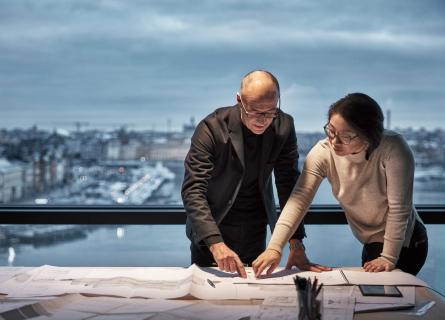
Mountain tops and happy fish
Aquaculture, the farming of fish and crustaceans, is the fastest growing food industry in the world right now.
But fish farming can create sewage runoffs and other local environmental problems. Can we meet the increasing demand for fish while ensuring that the production is carried out in an eco-friendly way? One solution can be found on the mountain tops of the Swiss Alps.
Food production is one of the most critical issues for our future. By the year 2050, food demand is expected to double and will create new requirements on how we produce and consume food. Aquaculture is one of the fastest growing food sectors in the world. Demand is driven primarily by emerging economies where the middle class is growing. The increasing demand has made fish farming into a global industry with enormous significance for the social development in many parts of the world. But this development does not come without challenges to be solved. In many countries, a large amount of antibiotics and fertilizers are used to prevent diseases and to maximize fish size. Pesticides used on fish farms can leak into surrounding waters and soil, which can have a devastating environmental effect. Fish farmed in pools or containers on land are becoming more common and do not affect the surrounding waters in the same way. However, the concept of pool farming requires a large amount of energy and the need to transport the fish between different farms during its lifetime, also contributing to emissions.
600 tons of fish
On the one hand, fish farming is a vital source of income for many; on the other hand, it can have a potential negative environmental impact. Can we harness the potential of farmed fish without harming the environment? Someone who seems to have the answer is British business leader Julian Connor. Julian is CEO and Founder of Swiss Lachs – a unique pilot project with the ambition to transform the aquaculture industry. With the support of ÅF, Julian has built Switzerland’s first land based salmon farm – right in the middle of the Swiss Alps.
Located in the municipality of Lostallo, the facility was finished in 2016 and has the capacity to produce 600 tons of Atlantic salmon per year. Because of innovative technology and smart use of natural resources, it has significantly lower environmental impact than seabased salmon farms. No additives, chemicals or antibiotics are used. The waste from the farm is delivered to a biogas plant.

Less stress and climate impact
ÅF in Switzerland has been responsible for project management, technical coordination, architecture and design during the development of the facility. What makes this facility unique is that the entire production process, all the way from hatching of the eggs to smoking the fish, takes place in the same building.
”It is not uncommon that salmon is produced in Norway, processed in Poland and packaged in France before it reaches the consumer. It can take days. We can do the same procedure in one facility and it only takes a couple of hours. The fish live their whole lives here, in a stable environment with less stress, and are packaged on location which significantly decreases the climate impact”, says Claudio Ferro who is responsible for the project at ÅF.
In conventional land based farms, several smaller tanks are used during different phases, ranging from fish egg hatching until the fish are fully developed. In Lostallo, fish bigger than 200 grams are raised in the same large tank with a constant waterflow. This is an important perspective with regards to sustainability.
”Even though the fish have more space to swim, this facility requires approximately one sixth of the surface compared to the average land based fish farm. This means we can use the nature in other ways rather than exploiting it. We have focused on creating an aesthetically attractive building that compliments Lostallo’s beautiful nature instead of destroying it”, says Claudio.
Reproducing the entire life cycle
The level of innovation has placed high demands on the technical functionality. It has not only been about building a facility – it has also been about reproducing the life cycle of the fish, from hatching to fully grown fish.
”The challenge has been the integration of the various smart systems that the plant consists of – the different phases of production require different technologies that come from different suppliers. The end product is a coherent system that can be monitored from a centralized control system”, continues Claudio.
In August 2018, the first batch of salmon was harvested in Lostallo. There has already been a great interest from consumers, researchers and investors.
“This is one of those hopeful and promising developments we sometimes see, where a project can transform and disrupt the way things have been done. The next step is to improve sustainability by replacing the feed that today is fish based, with an insect and algae based alternative, which has an even lower climate impact”, says Claudio Ferro.
